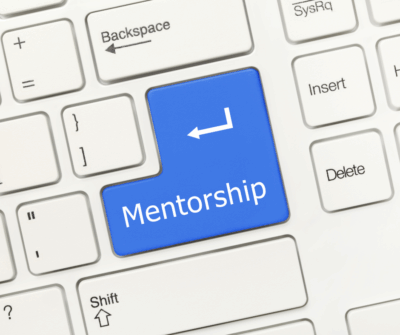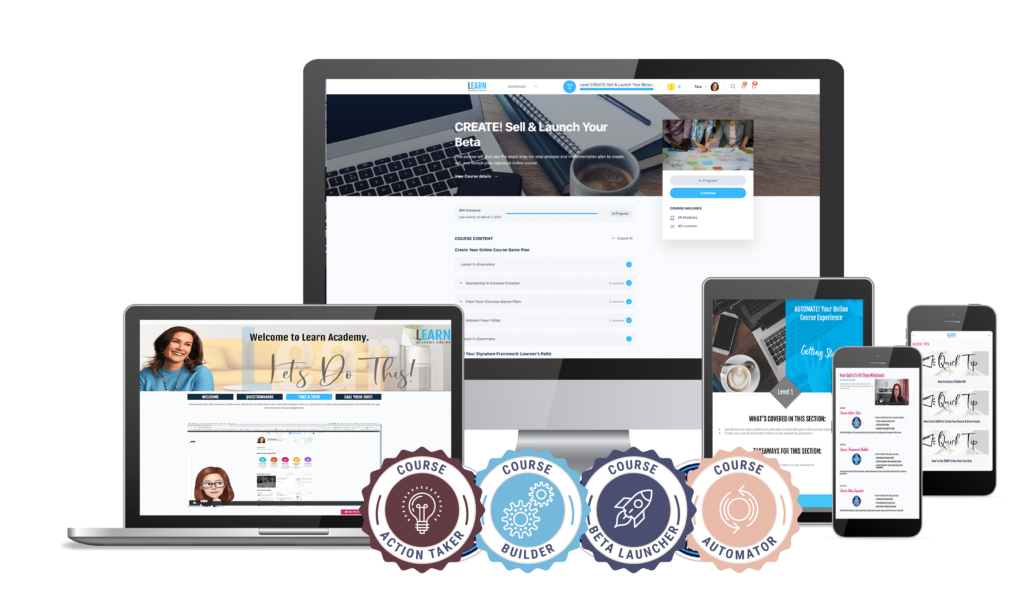Build Your Own Million Dollar Roadmap – AKA Authority Framework
One of our core philosophies is how we help service providers, consultants and coaches package their one on one services into a million dollar roadmap or signature framework so that they can make a bigger impact and income with their work.
And obviously start to have a little bit more time freedom by standardizing the training curriculum, what that means is, is that you actually identify the steps that you are taking, or that you have your customers take from point A to point B.
So they have a problem, they’re not able to do something, they need some help.
That’s point A, point B is the solution that they want that they’re looking for. And you have a unique way in which you actually can help people get from point A to point B, we call that your million dollar roadmap, which is really just your signature methodology or your intellectual property, right?
It’s the unique way that you take someone step by step from point A to point B. So here’s the problem that most people make is that they are trying to figure out out of the sort of mixed bag of tricks of the things that they do for their one on one clients, like, what is the flow?
How do you help all of these, you know, kind of random people that you can take on?
How do you consistently help them from, you know where they are today to where they want to be?
And so there’s a lot of different factors that go into that.
But the one that I want to talk about today is this concept that we’re going to standardize that process, right.
So you’re going to take the distance between A and B and create the bridge.
And the bridge, again, is your unique way in which you help somebody get there, right.
So think of it as a roadmap (with million dollar potential). Think of it as step by step, however, however it makes sense to you.
That is the piece that you are going to want to lock and load, meaning you’re not going to redo it every single time you get a new client or customer, you’re not going to change it, right.
So once you’ve done a beta, where you’ve sort of tested it in the wild and make sure that it’s working, and you can actually get people from point A to point B, then it becomes your signature methodology, then it becomes something that you can package and people can can consume.
That’s how, when you go from one to one to one to many, it doesn’t matter how many customers you add at the same time, your workload does not increase because you’ve identified that, that consistent path that helps somebody go from point A to point B.
The second thing is that we talked about, like you have to personalize the experience. So someone feels like they’re being supported all the way through. And most of the time, people say, Well, wait a minute, you’re telling me to standardize my approach. But you’re also telling me to personalize the experience for the customer?
And if there’s, there’s a standard way that I’m helping them, then how do I personalize it, right?
How does it become something that feels unique and in personalized for that particular customer that you have, without doing one on ones without changing the approach and without like picking up that random set of tricks that you have based on your skill ability, right?
And the answer to that is the curriculum stays the same. So the way that somebody is learning how to get from point A to point B stays the same.
The personalization comes in, as they are going through the journey.
So you go from teacher to guide in that particular situation, right?
So you’re guiding somebody down the path that you’ve already created, and helping them actually take action and and start to get results right, you are helping them scooch to the milestones that you have created.
So that they can get this the result that that you have promised them. So the personalization comes into being aware of where they’re going to run into pitfalls, where they’re going to run into hurdles and obstacles, and that they need you to come in and help them continue moving forward.
Now the beauty of this is in your proprietary process, because you know it so well, you probably can can identify based on your experience or your customers experience as you’ve tested this, that most of the places where people aren’t gonna start struggling.
And so you can build in part of, you know, scaffolding or help for them, when you know that that’s gonna happen. So nine out of 10 times you can kind of identify when somebody’s gonna struggle that feels personalized to them.
Because when they get to that, that hurdle, they’re gonna go, okay, yep, she knows what to do.
Now she’s going to help me get moving forward. And so that’s still built into the curriculum, and eliminates a lot of the stopping and starting and dropping out, and no engagement and all of that, because you’re actually helping them where they are, right?
So when you’re putting together your standard, proprietary methodology, or your million dollar roadmap, you are actually doing it in the order that they’re going to learn it right. So it’s not just a bunch of information in a training site that they can just go pick and choose whichever one they feel like they want to watch on that particular day.
It is a stair stepped experience, in terms of like, you know, learn this, go do it, learn this, go do it, learn this, go do it, right. So they’re actually on a journey to go from point A to point B, right? It’s not like, here’s point A, and here’s point B.
And then I’m gonna throw a bunch of stuff in the middle, and you go figure out what you want to do, right? Like, that’s the old model. That’s how teachers used to work as they were just like, teach a bunch of information. And you would go figure out how to apply it to whatever you needed to apply it to in the future.
We don’t learn that way anymore. And we certainly don’t create programs that way. Ever, but for sure anymore.
So that’s how you’re gonna personalize experience is that they’re going to feel completely supported all the way through, even if you’re not doing one on ones, even if you’re not showing up live at all, because you’re going to create that level of experience of where are they in the journey?
And what are they struggling with?
And how do you help them get over those hurdles?
Now, the best experience that you can provide, is to give them an opportunity to get feedback on what they’re doing.
And be able to ask real questions as they’re going forward, right.
So you can be there for support, you can do this virtually, you can do this as a phone call. You can do this during office hours, if you feel really passionate about doing one on ones, you can do a one on one, but the one on one is actually around the question that they have, that they’re struggling with at that time.
Nine out of 10 times you need some sort of mindset or mind trash kind of thing, that stopping them from moving forward, it has nothing to do with the actual skills that they need to learn, right.
So that may be an opportunity for you to insert yourself in a one on one. If that is the work that you’d like to do.
You don’t have to, but that may be a place where you want to insert yourself, but it’s not a place. Like if you’re doing a one on one call is not to teach.
If you’re doing a one on one call, it’s not to help them necessarily, like do the thing. It’s to provide feedback, it’s to help them continue moving forward.
Same thing with a coaching call, or a q&a call or an office hours call or whatever you want to call it is an ability for them to come to you to get insight and direction and some laser coaching.
It’s not for you to be pushing information at them. And so once you have the system in place, you can start to see how some of the firefighting and the randomness and the sort of wackadoo questions will go away.
Because there’s a there’s like a prescribed path that you’re taking them down, you’re just like, just follow the path.
And I can help you get from point A to point B.
So that is one of the biggest questions I get is like, well, what’s standardized?
And what’s personalized?
Or like when do I need to show up?
And what does that look like?
So hopefully this serves you.
This is one of the things that we work on with our, with our clients, both in Learn Academy and our consulting that we do with various businesses because this is while it’s it’s something that once you get set up, it will set you free and allow you to focus on other areas of your business or enhancing what you already have. But you’re not recreating the wheel every single time.
But it’s hard to do because sometimes you’re just too close to it.
It’s hard to get it out of your head. It’s hard to see exactly how it is that you help people get from point A to point B because it’s so natural to do you it’s so ingrained in how you work.
Or if you’re like me, you’re so used to pulling out that mixed bag of tricks based on your experience, that it’s really hard to think about, like, what does life look like when I am not just constantly solving problems for the people that I am working with, right and consulting for is how do you flip the switch provide that level of authority and confidence that you have a path that’s gonna get them from point A to point B.
And the bag of tricks comes into play when you’re helping somebody overcome the hurdles that they have?
Not in the process or the actual skill building itself.
Our Host
Tara Bryan is on Instagram | Facebook | Linkedin
Website is: www.Taralbryan.com
Hey, it’s your host, Tara Bryan. And I am on a mission to help more business owners learn to infinitely scale their businesses by leveraging the power of online without sacrificing the customer experience or results.
I like to geek out on all things business strategy, marketing, interactive digital and user experience. This podcast is all about what is working, lessons learned and actionable tips to create and grow a thriving online business.
Join us each week as we dive into different strategies, tactics and tips you can apply immediately to your business.
Key Topics:
Map out your path | package your service | path to million dollars
Highlights
- Create one path that your customers can follow versus a mixed bag of tricks
- Identify Point A – What’s the problem?
- Identify Point B – What’s the solution?






